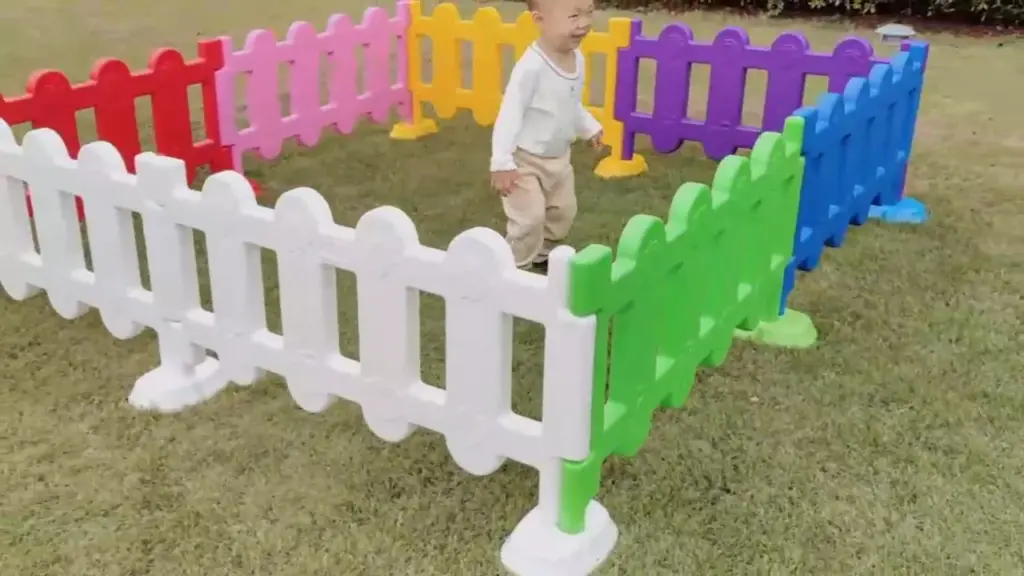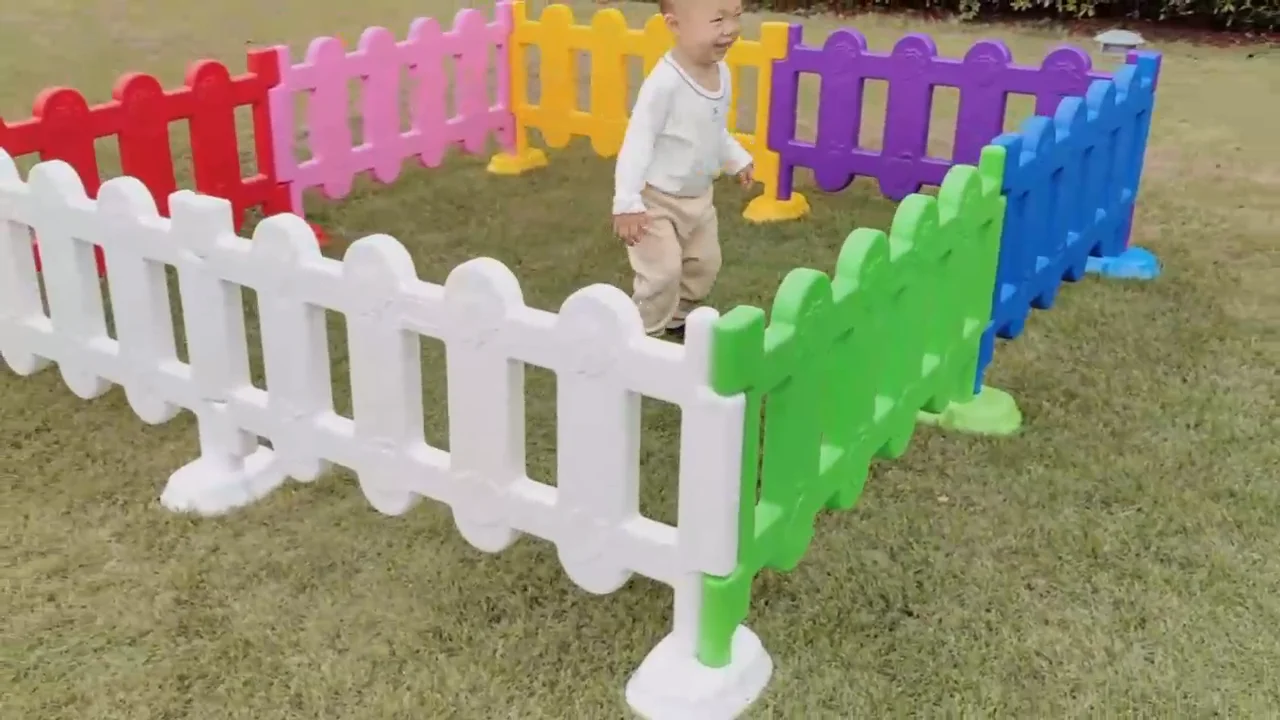
Choosing the Right Play Yard Fence: Safety, Durability, and Peace of Mind
As parents, guardians, and caregivers, ensuring the safety and well-being of children is paramount. One essential tool for creating a secure and designated play area is a play yard fence. These fences provide a contained space where children can explore, play, and develop without the constant worry of wandering into unsafe areas. Selecting the right play yard fence involves considering various factors, from safety features to durability and ease of installation.
This article delves into the key aspects of choosing the ideal play yard fence, offering insights and guidance to help you make an informed decision that prioritizes your child’s safety and provides you with peace of mind. We’ll explore different types of fences, materials, safety standards, and practical considerations for creating a secure and enjoyable play environment.
Understanding the Importance of a Play Yard Fence
A play yard fence serves several crucial purposes. Firstly, it establishes clear boundaries, preventing children from accessing potentially hazardous areas such as swimming pools, gardens with pesticides, or driveways. This containment is particularly vital for toddlers and young children who may not fully understand the dangers around them.
Secondly, a play yard fence offers a dedicated space for play, encouraging children to engage in physical activity and imaginative games. Knowing that children are playing within a safe and controlled environment allows parents and caregivers to relax and supervise from a distance, fostering independence and exploration.
Finally, a well-chosen play yard fence can enhance the aesthetic appeal of your outdoor space. With a variety of styles, materials, and colors available, you can select a fence that complements your existing landscaping and creates a visually appealing play area.
Key Considerations When Choosing a Play Yard Fence
Selecting the right play yard fence requires careful consideration of several factors. Here’s a breakdown of the key aspects to keep in mind:
Safety Standards and Certifications
Safety should be your top priority when choosing a play yard fence. Look for fences that meet or exceed industry safety standards, such as those set by the American Society for Testing and Materials (ASTM). These standards address aspects like height, spacing between slats or mesh, and the absence of sharp edges or protrusions.
Certifications like JPMA (Juvenile Products Manufacturers Association) indicate that the fence has undergone rigorous testing and meets established safety requirements. Always check for these certifications to ensure you’re investing in a safe and reliable product. Thoroughly inspect the play yard fence for any potential hazards before allowing children to use it.
Material Options: Pros and Cons
Play yard fences are available in a variety of materials, each with its own advantages and disadvantages:
- Plastic: Plastic fences are lightweight, easy to clean, and often more affordable than other options. They are resistant to rust and decay but may be less durable than metal or wood. Look for BPA-free and non-toxic plastic options.
- Metal: Metal fences, typically made of steel or aluminum, are known for their strength and durability. They can withstand harsh weather conditions and are resistant to damage. However, metal can become hot in direct sunlight, potentially posing a burn risk. Consider powder-coated metal fences, which offer better protection against rust and heat.
- Wood: Wood fences offer a natural and aesthetically pleasing look. They can be stained or painted to match your existing landscaping. However, wood requires regular maintenance to prevent rot and decay. Choose treated wood that is resistant to insects and moisture.
- Mesh: Mesh fences are lightweight and provide good visibility. They are often used in portable or temporary play yards. Ensure the mesh is made of durable material that won’t tear easily.
Height and Coverage Area
The height of the play yard fence should be sufficient to prevent children from climbing over it. A height of at least 24 inches is generally recommended for toddlers, while taller fences may be necessary for older or more active children. Consider the child’s developmental stage and climbing abilities when determining the appropriate height.
The coverage area of the fence should be large enough to provide ample space for play. Measure the area where you plan to install the fence to ensure it will adequately enclose the desired space. Modular fences allow you to customize the size and shape of the play area to fit your specific needs. [See also: Outdoor Play Area Ideas]
Portability and Storage
If you need a play yard fence that can be easily moved or stored, consider a portable or folding option. These fences are lightweight and can be quickly set up and taken down. They are ideal for use indoors or outdoors, and for travel. Look for fences with a compact folding design for easy storage in a closet or car trunk. Some portable play yards also come with a carrying bag for added convenience.
Ease of Installation and Maintenance
Choose a play yard fence that is easy to install and maintain. Some fences require professional installation, while others can be easily assembled by the homeowner. Consider your DIY skills and the complexity of the installation process when making your decision.
Regular maintenance is essential to keep your play yard fence in good condition. Plastic fences can be easily cleaned with soap and water. Metal fences should be inspected for rust and corrosion. Wood fences require regular staining or painting to prevent rot and decay. Mesh fences should be checked for tears or damage.
Popular Play Yard Fence Options
Here are a few popular types of play yard fences available on the market:
- Free-Standing Play Yards: These are enclosed play areas that stand independently, without needing to be attached to walls or other structures. They’re highly portable and versatile.
- Configurable Play Yards: These consist of individual panels that can be connected in various configurations to create different shapes and sizes of play areas.
- Safety Gates with Extensions: While primarily designed for doorways and stairs, safety gates with extensions can also be used to create small, enclosed play areas.
- Outdoor Play Fences: Specifically designed for outdoor use, these fences are typically made of durable materials like metal or treated wood to withstand the elements.
Installation Tips for a Secure Play Yard Fence
Proper installation is crucial to ensure the safety and effectiveness of your play yard fence. Follow these tips for a secure installation:
- Read the Instructions: Carefully read and follow the manufacturer’s instructions for installation.
- Prepare the Area: Clear the area where you plan to install the fence of any obstacles, such as rocks, roots, or debris.
- Secure the Anchors: Ensure that the fence anchors are securely fastened to the ground or floor.
- Check for Gaps: After installation, check for any gaps or openings where children could potentially squeeze through.
- Regular Inspections: Regularly inspect the fence for any signs of damage or wear and tear.
Maintaining Your Play Yard Fence for Longevity
Proper maintenance will extend the lifespan of your play yard fence and ensure its continued safety. Here are some maintenance tips:
- Clean Regularly: Clean the fence regularly with soap and water to remove dirt and grime.
- Inspect for Damage: Regularly inspect the fence for any signs of damage, such as cracks, breaks, or rust.
- Tighten Hardware: Check and tighten any loose screws or bolts.
- Apply Protective Coatings: Apply protective coatings, such as paint or stain, to wood fences to prevent rot and decay.
- Replace Damaged Parts: Replace any damaged parts immediately to prevent accidents.
The Long-Term Benefits of Investing in a Quality Play Yard Fence
Investing in a high-quality play yard fence offers numerous long-term benefits. It provides a safe and secure play environment for children, allowing them to explore and develop without the constant worry of wandering into unsafe areas. It also provides peace of mind for parents and caregivers, knowing that children are playing in a controlled environment.
A durable and well-maintained play yard fence can last for many years, providing lasting value and enjoyment. It can also enhance the aesthetic appeal of your outdoor space, creating a visually appealing play area. [See also: Benefits of Outdoor Play for Children]
Conclusion: Prioritizing Safety and Fun with the Right Play Yard Fence
Choosing the right play yard fence is a crucial decision that impacts the safety, well-being, and enjoyment of children. By considering factors such as safety standards, material options, height, coverage area, portability, and ease of installation and maintenance, you can select a fence that meets your specific needs and provides a secure and enjoyable play environment.
Remember to prioritize safety above all else, and choose a fence that meets or exceeds industry safety standards. With the right play yard fence, you can create a safe and stimulating space where children can play, learn, and grow, giving you peace of mind and allowing them to thrive.

